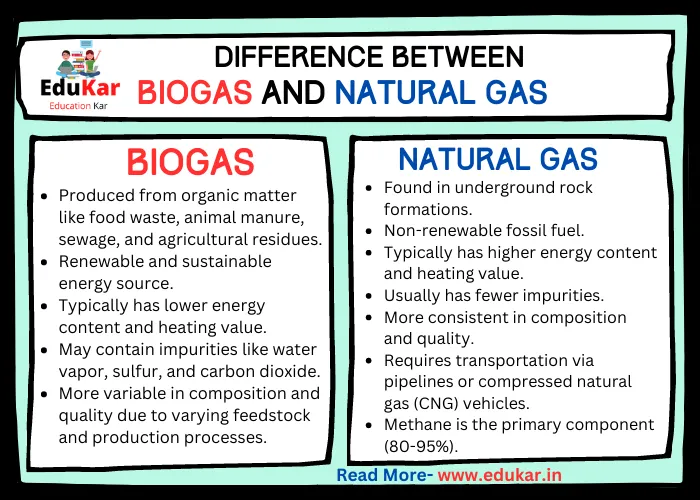Contents
Learn about the key differences between streamline flow and turbulent flow in fluid mechanics. Understand the characteristics of each type of flow, their applications, and how they affect the behavior of fluids. Explore this topic further with clear examples in this comprehensive guide by Edukar.

Introduction
Fluid mechanics is an essential part of physics that deals with the study of fluids motion and their behavior under various conditions. Streamline flow and turbulent flow are two significant categories in fluid mechanics. Understanding the difference between streamline flow and turbulent flow is crucial for various applications, including engineering, physics, and geology.
Streamline Flow
Streamline flow is also known as laminar flow. It is a type of fluid flow where the fluid particles move in a well-defined path or streamlines. Streamline flow is characterized by the absence of turbulence, and the fluid particles flow in parallel layers without mixing with each other. The streamlines are straight, parallel, and do not cross each other, except at the boundaries. Streamline flow occurs at low Reynolds numbers, which is a dimensionless parameter used to determine whether the flow is laminar or turbulent.
Characteristics of Streamline Flow
The following are some of the characteristics of streamline flow:
- The flow is steady and constant over time.
- The flow is predictable and follows a definite pattern.
- The velocity of fluid particles is constant in each layer, and the layers do not mix with each other.
- The pressure gradient is low, and there is little energy loss due to friction.
- The fluid particles move in parallel to each other, and there is no turbulence.
Reynolds Number
The Reynolds number is a dimensionless quantity used to determine whether a fluid flow is laminar or turbulent. It is defined as the ratio of inertial forces to viscous forces and is given by the following equation:
Re = (ρVl)/μ
Where Re is the Reynolds number, ρ is the density of the fluid, V is the velocity of the fluid, l is the characteristic length of the flow, and μ is the dynamic viscosity of the fluid.
When the Reynolds number is less than 2300, the flow is laminar, and when the Reynolds number is greater than 4000, the flow is turbulent. When the Reynolds number is between 2300 and 4000, the flow is transitional, and it may switch between laminar and turbulent flow.
Also Read: Difference Between Interference and Diffraction
Examples of Streamline Flow
Some examples of streamline flow are:
- Flow of honey or syrup from a container.
- Flow of blood through veins and arteries.
- Flow of water through a straight pipe at low velocities.
Also Read: Difference Between Potentiometer and Voltmeter
Turbulent Flow
Turbulent flow is a type of fluid flow where the fluid particles move in a random and irregular pattern. The flow is characterized by the presence of eddies, vortices, and turbulent fluctuations, and the fluid particles mix with each other. Turbulent flow occurs at high Reynolds numbers, and the flow is chaotic and unpredictable.
Characteristics of Turbulent Flow
The following are some of the characteristics of turbulent flow:
- The flow is unsteady and changes over time.
- The flow is unpredictable and does not follow a definite pattern.
- The velocity of fluid particles varies in different regions of the flow, and the layers mix with each other.
- The pressure gradient is high, and there is a significant energy loss due to friction.
- The fluid particles move in random patterns, and there is turbulence.
Reynolds Number
As mentioned earlier, the Reynolds number is a dimensionless quantity used to determine whether a fluid flow is laminar or turbulent. When the Reynolds number is greater than 4000, the flow is turbulent. Turbulent flow is more complex than streamline flow and is challenging to predict and control.
Examples of Turbulent Flow
Some examples of turbulent flow are:
- Flow of water in a river or stream.
- Flow of air around a wing of an airplane.
- Flow of water through a valve or a nozzle.
Difference between Streamline Flow and Turbulent Flow
| Feature | Streamline Flow | Turbulent Flow |
|---|---|---|
| Definition | A type of fluid flow characterized by smooth, predictable motion | A type of fluid flow characterized by chaotic, unpredictable motion |
| Velocity | The fluid particles move in a smooth, parallel manner | The fluid particles move in an irregular, random manner |
| Energy dissipation | Minimal energy is dissipated during flow | Significant energy is dissipated during flow |
| Reynolds number | Low Reynolds number (less than 2000) | High Reynolds number (greater than 4000) |
| Kinetic energy transfer | Kinetic energy is transferred mainly in the direction of flow | Kinetic energy is transferred in all directions |
| Friction | Frictional forces are low and predictable | Frictional forces are high and unpredictable |
| Pressure drop | Pressure drop is low | Pressure drop is high |
| Mixing and diffusion | Mixing and diffusion are limited | Mixing and diffusion are high |
| Application | Applicable to slow-moving fluids with low viscosity | Applicable to high-speed fluids with high viscosity |
Factors Affecting Streamline and Turbulent Flow
The following are some of the factors that affect streamline and turbulent flow:
1. Fluid Velocity: Streamline flow occurs at low velocities, while turbulent flow occurs at high velocities.
2. Fluid Viscosity: Streamline flow occurs in fluids with low viscosity, while turbulent flow occurs in fluids with high viscosity.
3. Reynolds Number: A higher Reynolds number leads to turbulent flow, while a lower Reynolds number leads to streamline flow.
4. Flow Geometry: Smooth and straight pipes favor streamline flow, while rough and irregular surfaces favor turbulent flow.
Also Read: Difference Between Image and Shadow
Importance of Streamline and Turbulent Flow in Engineering
Streamline and turbulent flow are essential in engineering applications. Understanding the characteristics, factors affecting the flows, and their significance can help engineers design and develop efficient and effective systems.
Streamline flow is useful in applications where a constant and steady flow is required, such as in the transport of fluids in pipes and the design of turbines and propellers.
Turbulent flow is useful in applications where mixing and turbulence are desired, such as in the mixing of chemicals in a reactor, in combustion engines, and in the design of heat exchangers.
Summary
streamline flow and turbulent flow are two significant categories in fluid mechanics. Streamline flow occurs at low Reynolds numbers, and the fluid particles move in a well ordered and predictable pattern. Turbulent flow, on the other hand, occurs at high Reynolds numbers, and the fluid particles move in a chaotic and unpredictable manner. Both types of flows have their advantages and disadvantages and are useful in different engineering applications.
Understanding the differences, factors affecting them, and their importance in engineering is essential for the design and development of efficient and effective systems.
FAQs
What is Streamline flow?
Streamline flow is a type of fluid flow in which the fluid particles move in smooth paths or streamlines, without any random motion or turbulence. This type of flow is characterized by the absence of eddies, vortices, and other irregularities.
What is Turbulent flow?
Turbulent flow is a type of fluid flow in which the fluid particles move in irregular and chaotic paths, with constant changes in velocity and pressure. This type of flow is characterized by the presence of eddies, vortices, and other irregularities, which lead to mixing and diffusion of the fluid.
What are some real-world examples of streamline flow?
Streamline flow can be observed in low-velocity fluids such as water flowing through a smooth pipe or a river flowing smoothly around rocks and obstacles. It can also be observed in the flow of air around a streamlined object such as an airplane wing or a car.
What are some real-world examples of turbulent flow?
Turbulent flow can be observed in high-velocity fluids such as water flowing over a waterfall or rapids, or in the flow of air around an object with a complex shape such as a tree or a building. It can also be observed in the flow of air around a wing or rotor blade at high speeds.
References:
- Munson, B. R., Young, D. F., & Okiishi, T. H. (2013). Fundamentals of fluid mechanics. John Wiley & Sons.
- White, F. M. (2016). Fluid mechanics. McGraw Hill Education.
- Cengel, Y. A., & Cimbala, J. M. (2013). Fluid mechanics: fundamentals and applications. McGraw Hill Education.
- Streeter, V. L., & Wylie, E. B. (2008). Fluid mechanics. McGraw Hill Education.
- Fox, R. W., & McDonald, A. T. (2011). Introduction to fluid mechanics. John Wiley & Sons.
- Trott, W. M. (2011). Fluid mechanics: an introduction to the theory of fluid flows. John Wiley & Sons.
















